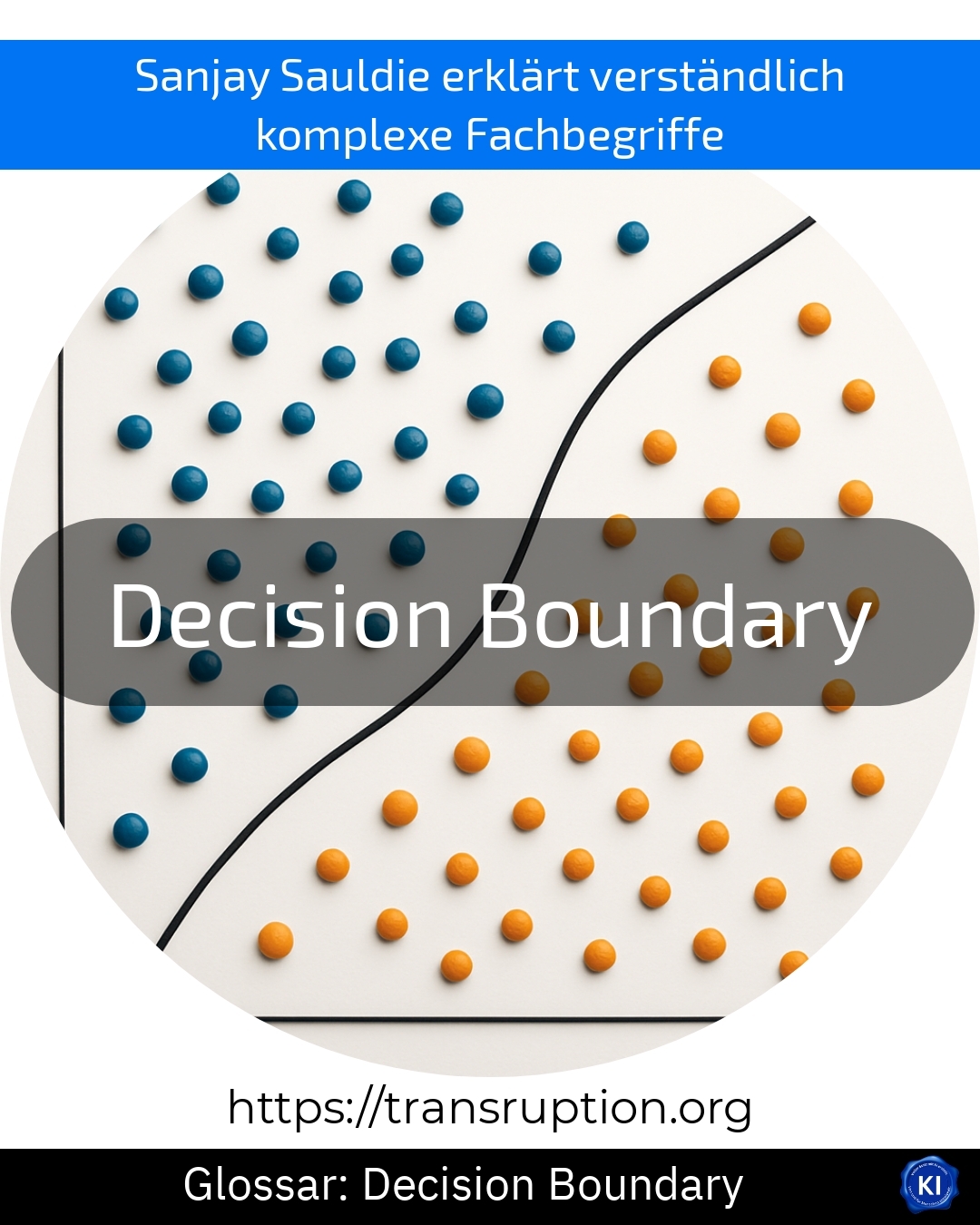The term decision boundary originates from the fields of artificial intelligence and big data. It plays an important role when computer programmes are supposed to make decisions independently, for example in image recognition or in intelligent assistance systems.
In data analysis, a decision boundary describes the line or area that separates different groups from one another. Imagine you want to predict whether an email is spam or not based on certain characteristics. The decision boundary is the invisible dividing line that the computer programme draws to distinguish all spam emails from normal emails.
An illustrative example: you have a map with red and blue dots. The task of artificial intelligence is to find the best possible dividing line so that all the red dots are on one side and all the blue dots are on the other. This boundary is the decision boundary.
The better the decision boundary is defined, the more accurately a system can categorise new data and make reliable decisions. This makes it particularly important for applications in artificial intelligence and big data.















